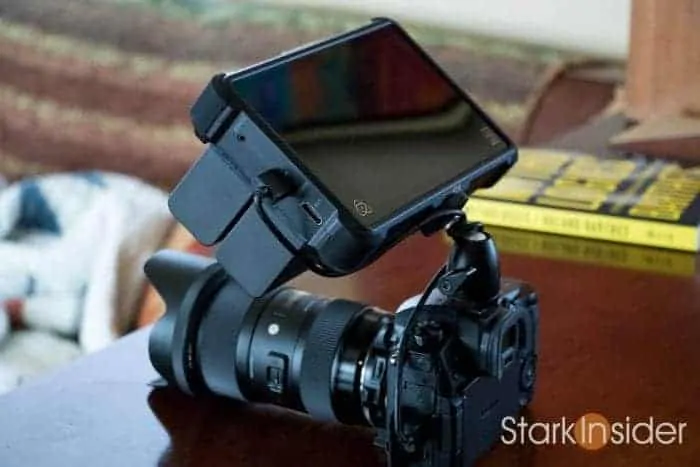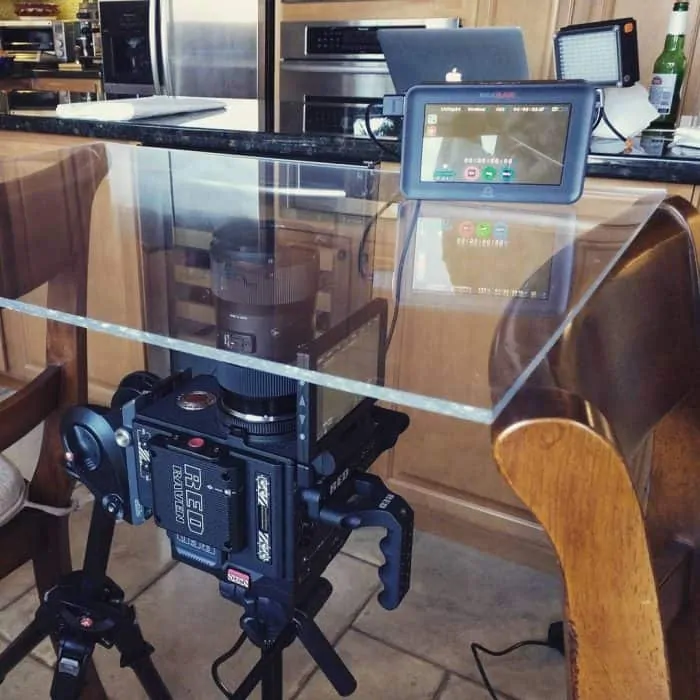Sigma 18-35. Welcome to the Hall of Fame.
If you’re into videography or filmmaking on a budget, or enjoy shooting wedding videos, or perhaps are a budding photographer, chances are you’ve heard of the Sigma 18-35mm ART telephoto lens.
Sure, it’s just a lens. But glass is one of the most important factors in gearing up for a shoot. Lighting, composition, music, and, of course, story, are all paramount. And, yes, the camera matters somewhat (but not nearly as much as many suggest). However, as we know, the way we translate ideas and images to the viewers largely comes down to the lens attached to our camera.
There’s a lot of choice out there when it comes to lenses, not to mention price points. You could buy a Canon nifty fifty for about $125 (USD) and be happy as punch — there’s something to be said about learning to shoot on a prime lens. Or, maybe you’re a big budget production house and can afford Hollywood-like glass that can cost upwards of $50,000-100,000… per lens. Ah, that’s why there’s such a thing as rental houses!
If I were stuck on a desert island and could only bring one lens — within a reasonable, non Michael Bay price range — it would be the Sigma 18-35mm ART f/1.8.

A few years ago I bought the famed Sigma. I had read so much about it, I finally relented and had to see what the fuss was all about. So I stick it on my Canon EOS 70D. And there it stayed a long time. Until I moved on to a Canon C100 for most of our video work here on Stark Insider. There it stayed too. Until we started using a Scarlet-W and there it stayed. Until we started using a compact Panasonic GH5 for travel work. And, yet again, there it stayed … and stayed.
The hype was real. The Sigma 18-35mm is a real sweetheart of a lens. Hence, this ode.
Why though?
Here’s why I like this lens and use it all the time for video (and it’s great of course for photos too):
Rock solid build quality.
Outstanding engineering, you can really feel the robustness in hand. My Sigma has taken, from the streets of San Francisco, to the tundra of Iceland, to the Baja desert, and never once experienced an issue (one time I did have to get creative to remove a stuck filter, through not fault of the lens)
That image!
Some refer to the Sigma 18-35mm as “three primes in one.” I’d have to agree. Typically with a telephoto lens you sacrifice some image quality for convenience. Instead of, say, carrying 18mm, 24mm and 35mm primes you could just carry this single lens. I’ve found in my (decidedly non-scientific) testing that this lens is incredibly sharp. Yet, the image it produces is not video-ish. Dread that. Instead, there’s beautiful, creamy bokeh and overall gorgeous imagery. I’ve used it on Canon EOS bodies, the GH5, Canon C100, and RED Scarlet-W. All results top notch.
Video Example: Wrong’s What I Do Best
Gear: Canon EOS 60D, Sigma 18-35mm, Canon 18-135mm, Zoom recorders
Location: San Francisco Art Institute
Director: Clinton Stark
Performs well in low light.
At f/1.8 this is a fast lens. Not too shabby considering, again, this is a zoom. When I’m headed indoors for a shoot or into dark wine caves or backstage at a theater, I like the flexibility of being able to open up to 1.8. It can save your butt if lighting isn’t available in run-and-gun situations. After shooting with the Sigma 18-35mm it can be hard to go back to something like the Canon 24-105. That’s my standard doc lens. Rated at f/4, though, it doesn’t do so well in low light — thankfully the C100 can help thanks to its sensor’s superb sensitivity, other cameras not so much.
Price.
The Sigma 18-35 continues to be one of, if not, the best deals in the world of photography and videography. Shooting an indie film on a budget and can’t afford Canon CN-E or Zeiss primes? Try this Sigma (Rokinon Xeen primes might also be a good choice, albeit more expensive). In a world where quality glass can easily cost thousands of dollars, it’s sort of like grand theft auto. $799?! Add a cheap Rokinon Cine 50mm and 85mm and you’re filmmaking kit is done and done… without breaking the bank.
I also like that Sigma offers a dock for this lens. Connect it to your computer via a USB cable and you can update the firmware and tweak a few settings if you wish (not required in order to use the lens out-of-the-box as is).

As is typical with many lenses you can buy this one in several mounts. I chose Canon EF. It seems to be widely adopted, at least in the indie and non-Hollywood space (where Arri’s PL mount dominates). So I can use it natively on Canon and RED. For the GH5 I use a Metbones Ultra Speedbooster (0.71) that produces lovely results. Yes, it makes that DSLR form factor heavier. On the upside, the additional weight can help with stabilization. For me, the results are worth it. If I absolutely must travel as light as possible with the GH5 I’ll take the native Panasonic 12-35mm (great lens). Whenever possible I prefer the Sigma 18-35mm.
There you have it. Ode to the Sigma 18-35mm.
Not the first time you’ve heard this story. And certainly not the last.
I’m planning a few video projects here in San Francisco. As I usually do after I define the premise, and overall themes and basic storyline (even for non narrative), I make a brief equipment list. I’m usually trying to decide whether I need a flexible all-in-one doc camera like the C100, a discrete one like the GH5, or something of the best caliber in terms of video files and dynamic range where a RED camera body would make sense if there’s more time, more light, more budget. When it comes to lenses, I’ve realized that the Sigma 18-35mm is always on my list. Its surely paid for itself many times over I’ve used it so often.
Video Example: Fish. In. Fridge.
Gear: RED Scarlet-W, Sigma 18-35mm, a wife, a mask
Location: Studio
Director: Clinton Stark
A final thought. Yes, camera bodies can be cool, drool-worthy, can’t wait to NAB sorts of things. They get all the headlines. But it’s pretty much everything else that’s more important to the final result. Lighting. Composition. Acting. The set. Script and story. Camera movement. Craft services. And on and on and on. And, no question, cinematography and lenses. I believe the two go hand in hand. With the camera, just attach a battery, hit record and you’re done. With lenses, there’s a whole world to learn about. It’s what we aspire to master. I’ve learned (hopefully) over my last 12 years of work here on Stark Insider that tech kit can only get you so far. The next level is the premise, the story, the look, the emotion. So that’s where we’re hoping to go next on Stark Insider.
Happy shooting!
Research/Buy:
- Sigma 18-35mm f/1.8 ART Lens (available mounts: Canon, Nikon, Pentax, Sigma, Sony)
- Canon 50mm f/1.8 STM Lens (a low cost nifty fifty)
- Rokinon 50mm Cine DS T1.5 (a really nice, affordable cinema prime, all manual)
- Rokinon 85mm Cine DS T1.5 (use this at night for some killer bokeh and flare)
- Panasonic GH5 4K Mirrorless Camera (if I were to write another ode, it would be for the GH5, just an amazing camera package)

